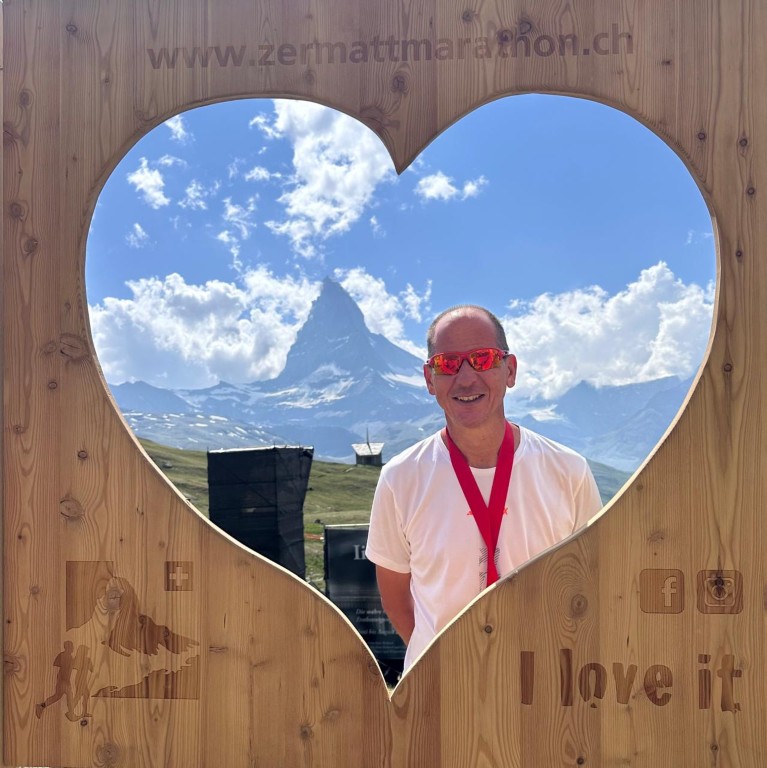
Pierre Goussard at the finish line of Gornergrat Zermatt Ultra Marathon, with the Matterhorn in the background.Credit: Pierre Goussard
Going the extra mile, and often uphill, is literally what paediatric pulmonologist Pierre Goussard does to raise funds to buy an advanced bronchoscope to improve diagnoses and treatment of young patients.
Since launching a Given Gain campaign to support the effort, he has completed around 11,000 km in training and races. This includes his self-funded participation in city marathons in Rome and Prague. So far he has raised more than R50 000 ($US 2,800) from donations.
His most recent endeavour took him to the Swiss Alps, to complete the Gornergrat Zermatt Ultra Marathon, one of the most demanding courses in Europe. Goussard was not satisfied with completing the normal Königsdisziplin marathon of 42,2km, which runs from St Nicklaus through the deepest valley in Switzerland to the Riffelberg at Gornergrat. He added another 3.4km of uphill running for the “Herausfordering”, and endured another tough 514m rise in altitude before eventually in 6:52:48. The race climbs 2458 metres.
“That last three kilometres were all basically uphill. It was a struggle, as I normally train at sea level in Cape Town,” says Goussard, who completed the same race in 2022.
Goussard is a paediatrics professor at Stellenbosch University in South Africa. He works in Tygerberg Hospital, a state-run entity serving the greater Cape Town community and South Africa at large. As clinical unit head of Tygerberg’s Paediatric Pulmonology and Paediatric Intensive Care Unit (PICU), he has seen many babies and children with complicated respiratory conditions, tuberculosis, HIV-related complications, congenital lesions and life-threatening pneumonia.
His team is often called upon to help dislodge small items trapped in a child’s nose or airways. A third of all bronchoscopy procedures they perform annually help to diagnose and treat children suffering from tuberculosis (TB). The disease can cause nodes to grow along airways and in lungs, making breathing extremely difficult.
He says that having a bronchoscope — a flexible tube with a light and camera at the end — suitable for paediatric patients would enable advanced techniques like endobronchial ultrasound (EBUS) – an ultrasound attached to a bronchoscope, radial EBUS – a tiny, rotating ultrasound probe on a bronchoscope, and cryotherapy, which allows for the freezing and destruction of abnormal tissue.
The particular bronchoscope he has in mind costs $US 22,600, a price beyond the reach of South African public healthcare expenditure. As chair of Tygerberg Hospital Children’s Trust, Goussard decided to dedicate his hobby of running marathons towards raising funds for it.
“Beyond immediate patient care, the equipment would reduce the need for referrals to higher-care wards, and it would lower healthcare costs, and strengthen training programmes for junior staff and doctors from across Africa,” he adds.
